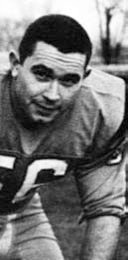The Sixties: The Gaels' Golden Age
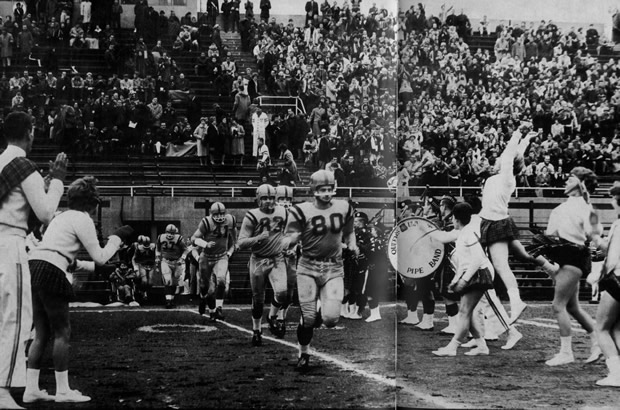
Memories of Comm’64
No one could have accused them of shirking their civic duty. One fall day in 1961, Dave Wilson, BCom’64, and a group of his classmates were kicking a football around Leonard Field outside Morris Hall when two police officers approached looking for volunteers for a police line-up.
“All ten of us piled into the cruisers for the trip to the station,” says Dave. “We were in blue jeans covered in mud and carrying a football, and we were all six feet or taller. The other two guys in the lineup were wearing black leather shoes and black leather jackets and were four or five inches shorter. The poor guys didn’t stand a chance.”
While this close encounter with the local constabulary was good for a laugh, other examples of campus hijinks and challenges to authority were a sign of the times in the mid-Sixties.
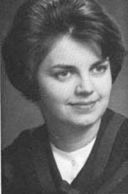 Elaine (Knox) Howard Dave recalls student defiance in reaction to the University’s plans for a new physics building on one of the largest remaining green spaces left on campus, in front of Kingston Hall. A Queen’s Journal article on the proposed development, which was indelicately headlined “The Rape of the Lower Campus,” spurred Dave and his cohorts to action. “We decided this was a bad idea, and we’d go out at night and move the surveyors’ stakes in one direction or another.” In the end, Stirling Hall was built across from Victoria Hall on Queen's Crescent, now Bader Lane, and the playing field was preserved.
Elaine (Knox) Howard Dave recalls student defiance in reaction to the University’s plans for a new physics building on one of the largest remaining green spaces left on campus, in front of Kingston Hall. A Queen’s Journal article on the proposed development, which was indelicately headlined “The Rape of the Lower Campus,” spurred Dave and his cohorts to action. “We decided this was a bad idea, and we’d go out at night and move the surveyors’ stakes in one direction or another.” In the end, Stirling Hall was built across from Victoria Hall on Queen's Crescent, now Bader Lane, and the playing field was preserved.
In those days, Orientation for freshmen students was intense and prolonged, lasting an entire week, Dave says. “Back then our heads were shaved and we had to wear our Commerce tams at all times.” In 1962, his high-spirited class won the BEWS trophy for participation. “Greg Caldwell and I played handball with two guys from engineering and they just clobbered us. But it didn’t matter, because we got our participation points.”
The Commerce experience covered far more than sports and off-campus fun and games. Frosh who didn’t buckle down with the books when push came to shove simply didn’t last. For example, Dave’s class, about 60 students in first year, was down to 28 by third year. “At that point, we were a very tight-knit group who had a lot of fun and stayed together right through.” He and his Commerce classmates also played a major role in campus life. In 1963-64, three members of Dave’s class, including himself, Elaine (Knox) Howard and Rod Macleod, took three of the AMS’s 12 Tricolour Awards – the highest tribute paid to students for valuable and distinguished service to the University in non-athletic, extracurricular activities.
Rod was also President of the AMS and Elaine was the senior representative on the Levana Society, the all-faculty association of women students until 1967, when it merged with the AMS. Dave was drum major in the Queen’s Bands, sang with the Glee Club, and was President of both the Debating Union and the Commerce Club. He also chaired Orientation for the Class of ’67 in his senior year.
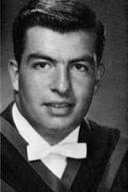 Rod Macleod For Dave, leading the band at football games was the ultimate good time, and he didn’t like to let anything get between him and his pipers. He remembers going to Ottawa one Saturday to write the GMAT (graduate management admission test) for entrance to Berkeley. “I didn’t care much about getting into Berkeley, but I did care about marching at half time. So I took the exam in my band uniform and drove back to Kingston in Gary Southmayd’s (Arts’65) TR-3 sports car in time to parade.”
Rod Macleod For Dave, leading the band at football games was the ultimate good time, and he didn’t like to let anything get between him and his pipers. He remembers going to Ottawa one Saturday to write the GMAT (graduate management admission test) for entrance to Berkeley. “I didn’t care much about getting into Berkeley, but I did care about marching at half time. So I took the exam in my band uniform and drove back to Kingston in Gary Southmayd’s (Arts’65) TR-3 sports car in time to parade.”
Dave singles out two professors whom he fondly remembers, for markedly different reasons. Prof. Dan Monieson was “hands down” the best professor he encountered at Queen’s, he says. The School’s Monieson Centre – established in 1998 with generous funding from Mel Goodes, BCom’57,LLD’94 – was named after the marketing professor who was renowned for his inspirational teaching and leadership.
Prof. Lorne McDougall also looms large in his recollection, both for his engaging teaching style and his quirky ways. Dave recalls arriving for a meeting to find the professor preoccupied with the waywardness of his bright yellow McLeod Tartan tie. “Every time he started talking and gesturing, the ends of his tie would flap and distract him. He finally just grabbed the stapler on his desk and stapled both ends of his tie together.”
Memories of Comm’66
 Legendary Coach Frank Tindall strategizing on the field The Sixties were glory days for Queen’s on the football field. Passion for the game and all the fanfare associated with it permeated the campus, and for good reason. During that period, the Golden Gaels lost only five of the 25 league games they played. Merv Daub, BCom’66, a middle line-backer and later team captain, was well known on campus, even if practices kept him from socializing much. But he and his classmates flocked to the post-game “tea dances” at Grant Hall. The quaint, decades-old ritual didn’t survive too much longer, however. “Things were changing,” says Merv. “We were just in front of the more radical wave of the Sixties. Guys were starting to grow their hair long. I wore a beard, which was unheard of in Commerce, and certainly unheard of on the football team.”
Legendary Coach Frank Tindall strategizing on the field The Sixties were glory days for Queen’s on the football field. Passion for the game and all the fanfare associated with it permeated the campus, and for good reason. During that period, the Golden Gaels lost only five of the 25 league games they played. Merv Daub, BCom’66, a middle line-backer and later team captain, was well known on campus, even if practices kept him from socializing much. But he and his classmates flocked to the post-game “tea dances” at Grant Hall. The quaint, decades-old ritual didn’t survive too much longer, however. “Things were changing,” says Merv. “We were just in front of the more radical wave of the Sixties. Guys were starting to grow their hair long. I wore a beard, which was unheard of in Commerce, and certainly unheard of on the football team.”
In first year, because they were still part of the Arts Faculty, the Commerce ’66 students came together as a group for only one course: accounting. Courses ran for the full academic year, an advantage for the crammers who might be inclined to “bugger around in the fall and then work hard from Christmas on,” as Merv recalls.
The Sixties Were Glory Days For Queen's On The Football Field.
That was a strategy that worked for only a few. While as many as 80 students were registered in the four-year program in first year, by the time they graduated the Class of ’66 had dwindled to 24. “A lot of people washed out in first year,” says Merv. “This was at a time when almost no one got more than 80 per cent. If you got marks in the low-tomid-70s, you were doing really well.” (Ron Bisset would win the medal in Commerce with an average that barely squeaked by Merv’s – a matter of considerable ribbing at subsequent class reunions.)
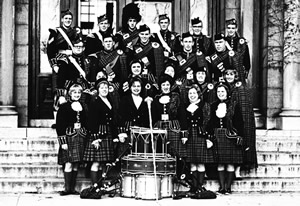 Queen’s Pipe Band, circa 1963, Drum Major Dave Wilson is in the top row, third from left, in a ‘bearskin’ hat.Despite the heavy demands of the course work, a number of Commerce students took on roles in student governance. Merv and Tom Kinnear, BCom’67, were involved in the Arts and Science Undergraduate Society (ASUS). Paul Myles and Gary Lewis, both BCom’66, helped to run the Alma Mater Society (AMS), as well as organize formals and concerts. Gary, nicknamed Louie in honour of the Kingsmen’s “Louie, Louie” hit song of the era, succeeded in bringing jazz musician Woody Herman and other big bands to Queen’s.
Queen’s Pipe Band, circa 1963, Drum Major Dave Wilson is in the top row, third from left, in a ‘bearskin’ hat.Despite the heavy demands of the course work, a number of Commerce students took on roles in student governance. Merv and Tom Kinnear, BCom’67, were involved in the Arts and Science Undergraduate Society (ASUS). Paul Myles and Gary Lewis, both BCom’66, helped to run the Alma Mater Society (AMS), as well as organize formals and concerts. Gary, nicknamed Louie in honour of the Kingsmen’s “Louie, Louie” hit song of the era, succeeded in bringing jazz musician Woody Herman and other big bands to Queen’s.
By 1963, the School of Business (its new name) had officially become a separate faculty. Under Dean L.G. Macpherson, the core strengths of the program continued to be its accounting and finance courses. In second year, students took their first marketing course, taught by Professors Dan Monieson and Carl Lawrence, who were highly regarded for their ability to inspire and engage students. They were “the fresh air of the place,” according to Merv.
By fourth year, students were thinking hard about potential areas of specialization and what the future held. Somewhat surprisingly, graduate school turned out to be the choice of many.
Frosh Orientation Featured Shaved Heads And Commerce Tams worn Everywhere.
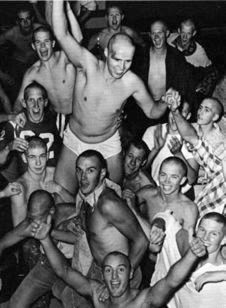 Initiation rites during Frosh Orientation week“This was a very different proposition from anything that had come before,”Merv says. “It was partly a result of the North America-wide push to elevate business education and partly our own professors’ awareness of the need for more business professors.” At the time, there were no Canadian business schools offering doctoral degrees in business.
Initiation rites during Frosh Orientation week“This was a very different proposition from anything that had come before,”Merv says. “It was partly a result of the North America-wide push to elevate business education and partly our own professors’ awareness of the need for more business professors.” At the time, there were no Canadian business schools offering doctoral degrees in business.
Nonetheless, the Class of ‘66 was remarkable for the number of doctoral degrees it produced. No fewer than five of its 24 graduating students, including Merv and the only woman in the class, Kathryn Britney, would become PhDs. This select group would go on to join what was at the time an elite group of business scholars in North America.
- 1 of 3
- ›




